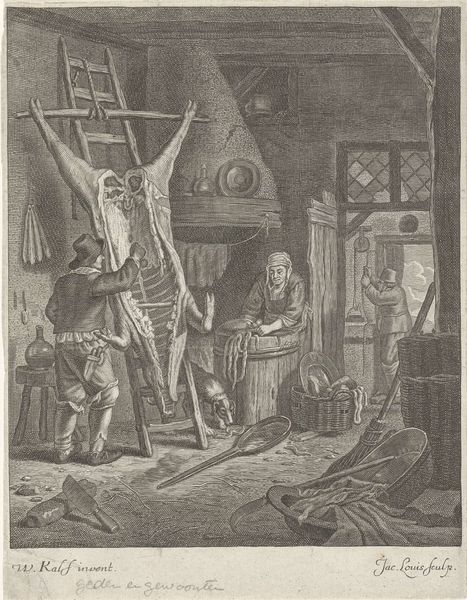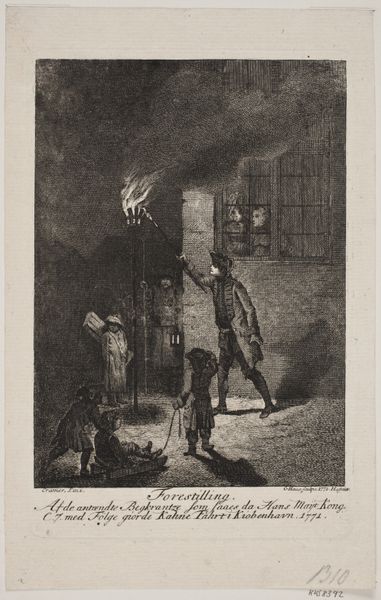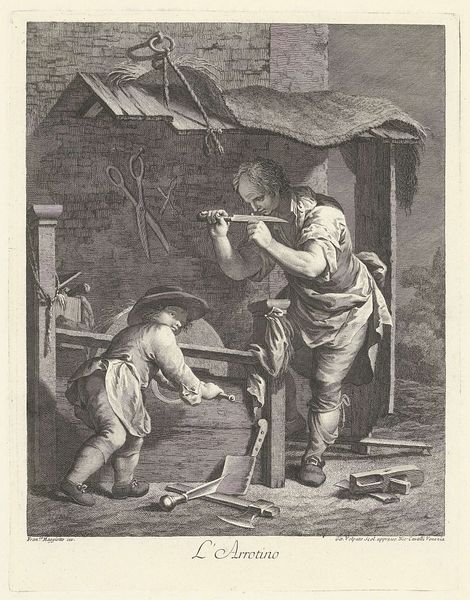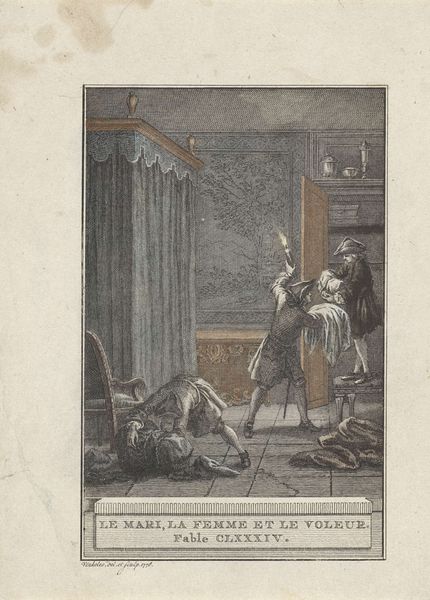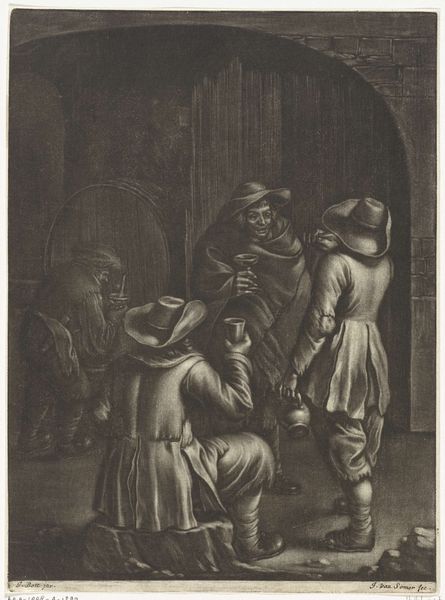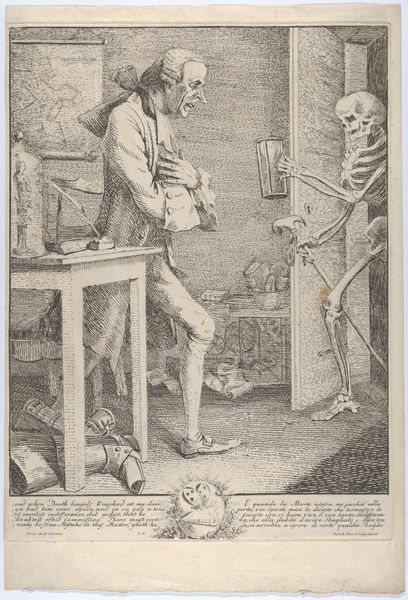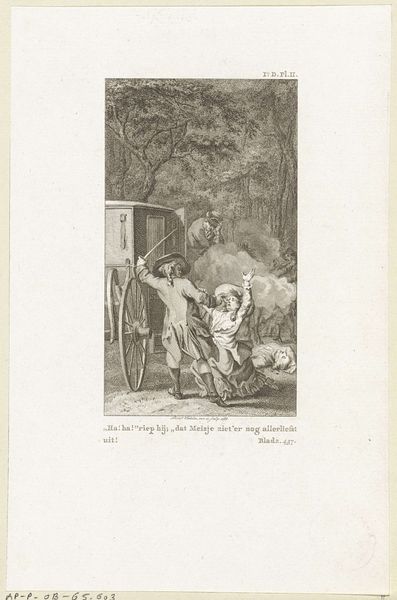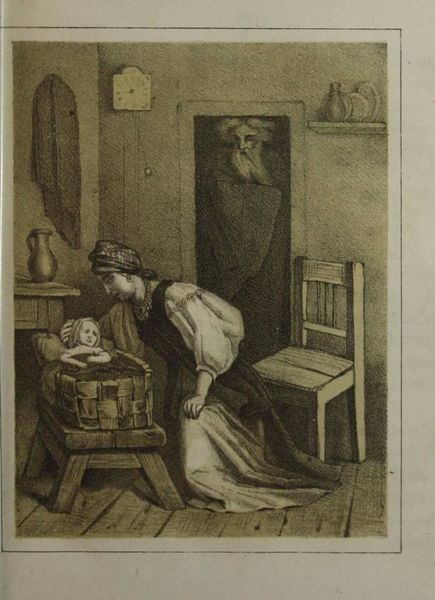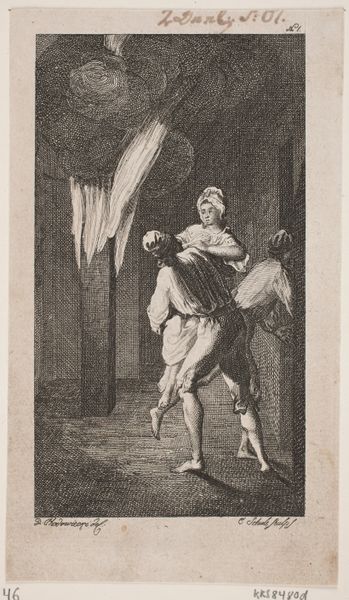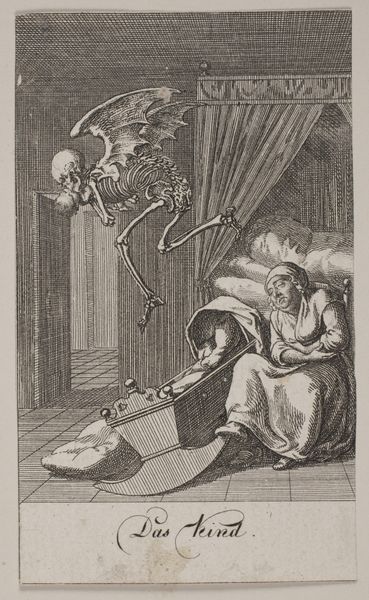
engraving
#
allegory
#
baroque
#
old engraving style
#
figuration
#
vanitas
#
genre-painting
#
history-painting
#
engraving
Dimensions: height 146 mm, width 94 mm
Copyright: Rijks Museum: Open Domain
Jan Punt created this print titled 'Man Verrast door de Dood' in the Netherlands, sometime in the 18th century. It depicts a man startled by the sudden appearance of Death in his storehouse. The image creates meaning through established visual codes. Here, Death is symbolised by a skeleton holding a torch, a widely recognised allegorical figure in European art since the Middle Ages. But look at the setting. Why is Death appearing in a storehouse? What does it mean that the man is a merchant or a trader? This print speaks to the economic structures of the Dutch Golden Age, a time of great prosperity, but also of stark moral anxieties about wealth. Is the artist suggesting that material success cannot save you from the inevitable? Is he critiquing the very foundations of Dutch society? The interpretation of art is contingent on social and institutional context. Researching the history of Dutch trade and moral philosophy would give us a better understanding of this image.
Comments
No comments
Be the first to comment and join the conversation on the ultimate creative platform.
